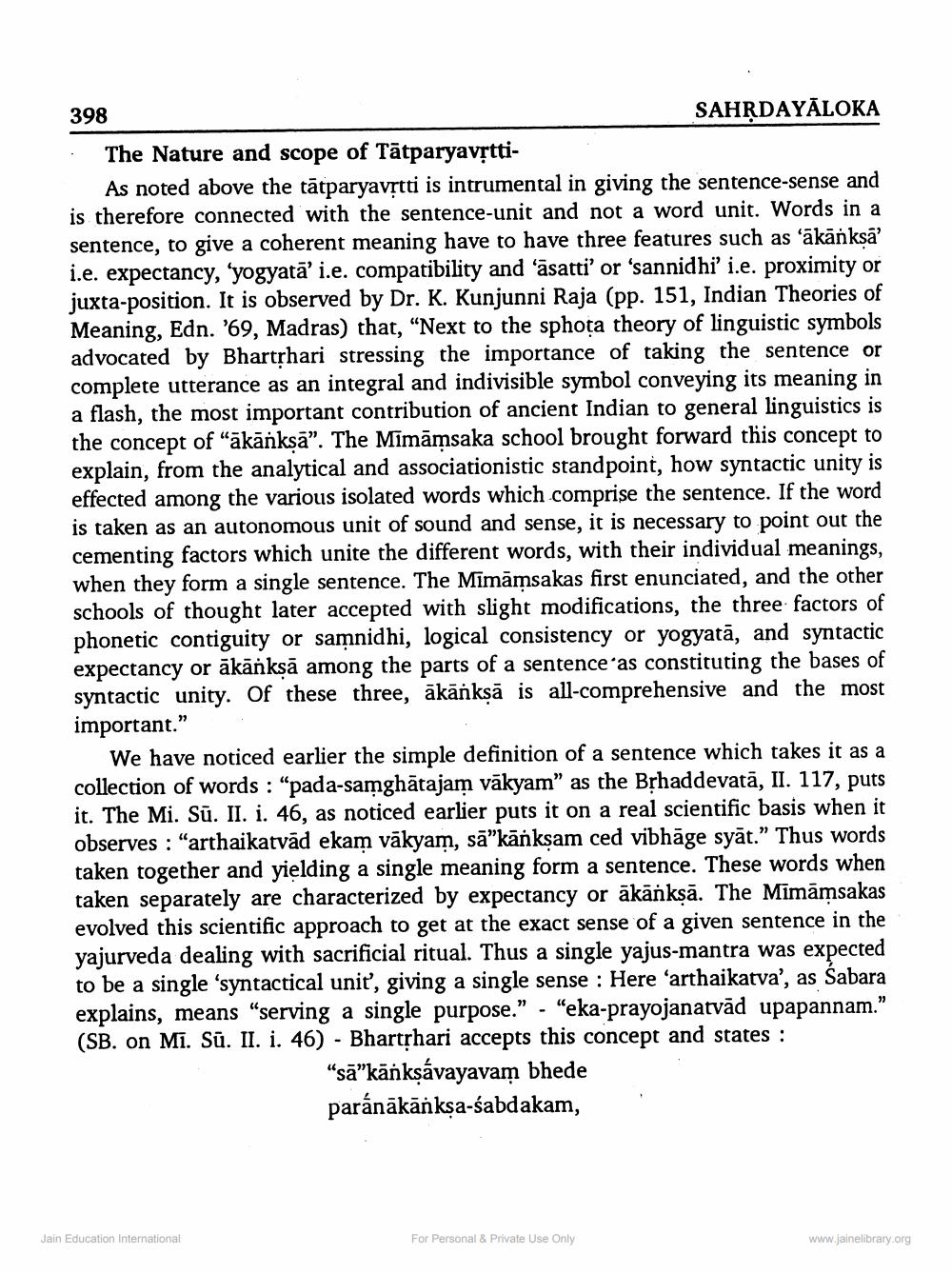________________
398
SAHRDAYĀLOKA
• The Nature and scope of Tātparyavștti
As noted above the tātparyavrtti is intrumental in giving the sentence-sense and is therefore connected with the sentence-unit and not a word unit. Words in a sentence, to give a coherent meaning have to have three features such as 'ākāńksa' i.e. expectancy, 'yogyatā' i.e. compatibility and 'āsatti' or 'sannidhi' i.e. proximity or juxta-position. It is observed by Dr. K. Kunjunni Raja (pp. 151, Indian Theories of Meaning, Edn. '69, Madras) that, "Next to the sphota theory of linguistic symbols advocated by Bhartřhari stressing the importance of taking the sentence or complete utterance as an integral and indivisible symbol conveying its meaning in a flash, the most important contribution of ancient Indian to general linguistics is the concept of “ākāńksā”. The Mimāmsaka school brought forward this concept to explain, from the analytical and associationistic standpoint, how syntactic unity is effected among the various isolated words which comprise the sentence. If the word is taken as an autonomous unit of sound and sense, it is necessary to point out the cementing factors which unite the different words, with their individual meanings, when they form a single sentence. The Mimāmsakas first enunciated, and the other schools of thought later accepted with slight modifications, the three factors of phonetic contiguity or samnidhi, logical consistency or yogyatā, and syntactic expectancy or ākānksā among the parts of a sentence'as constituting the bases of syntactic unity. Of these three, ākāńksā is all-comprehensive and the most important."
We have noticed earlier the simple definition of a sentence which takes it as a collection of words : "pada-samghātajam vākyam" as the Brhaddevata, II. 117, puts it. The Mi. Sū. II. i. 46, as noticed earlier puts it on a real scientific basis when it observes : “arthaikatvād ekam vākyam, sā”kānksam ced vibhāge syāt.” Thus words taken together and yielding a single meaning form a sentence. These words when taken separately are characterized by expectancy or ākānkṣā. The Mimāmsakas evolved this scientific approach to get at the exact sense of a given sentence in the yajurveda dealing with sacrificial ritual. Thus a single yajus-mantra was expected to be a single 'syntactical unit', giving a single sense : Here 'arthaikatva', as Sabara explains, means “serving a single purpose.” . "eka-prayojanatvād upapannam." (SB. on Mi. Sū. II. i. 46) - Bhartphari accepts this concept and states :
"sā”kāńksávayavam bhede paránākānkşa-sabdakam,
Jain Education International
For Personal & Private Use Only
www.jainelibrary.org




